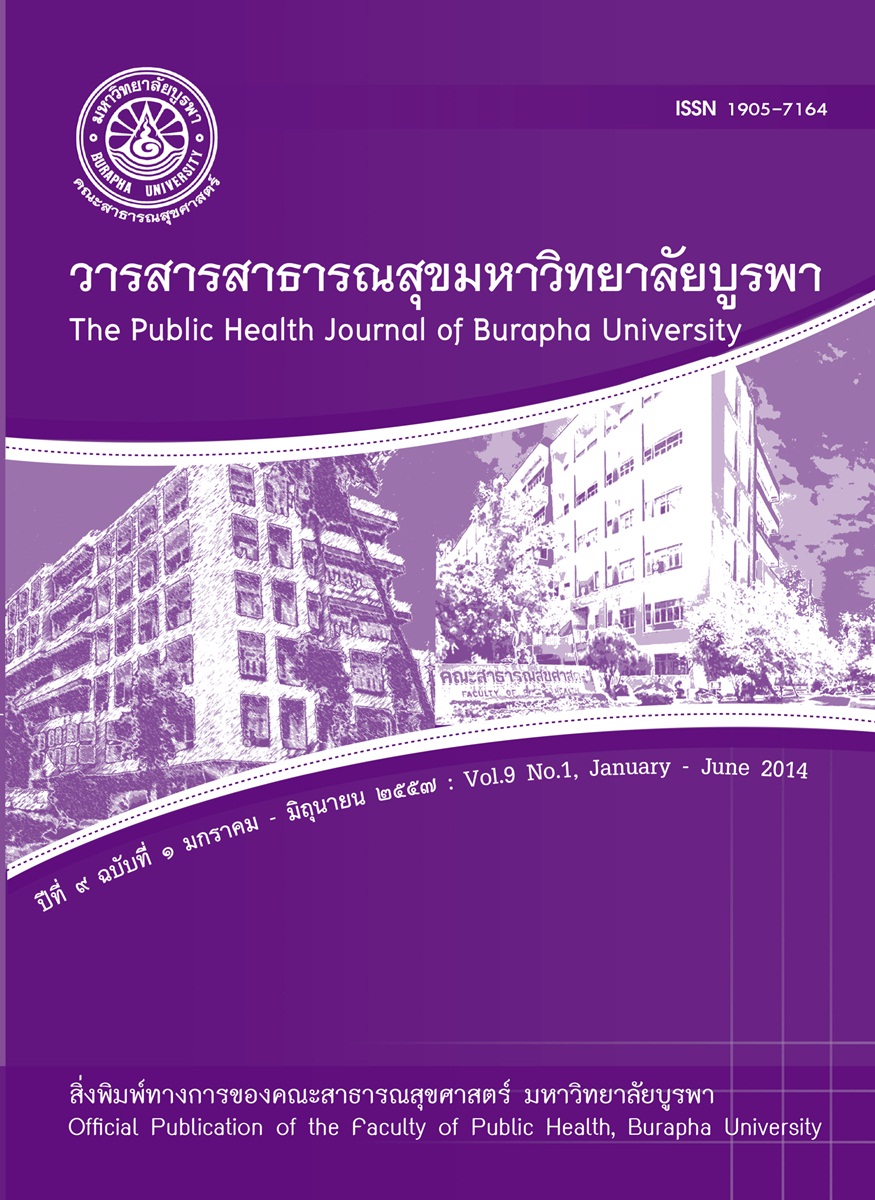หลักฐานแสดงการดูดซึมเข้าสู่ร่างกายทางผิวหนังของสารเบนซีนและโทลูอีน: กรณีศึกษาคนงานชายไทย 2 ราย
Main Article Content
บทคัดย่อ
สารเบนซีนและสารโทลูอีนเป็นสารตัวทำละลายอินทรีย์ที่ถูกนำมาใช้ในอุตสาหกรรมหลายประเภท สารเคมีในกลุ่มนี้มีคุณสมบัติระเหยเป็นไอได้ง่าย และละลายในไขมันได้ดี จึงสามารถเข้าสู่ร่างกายได้ดีทั้งทางการหายใจ และการดูดซึมทางผิวหนัง รายงานฉบับนี้เป็นกรณีศึกษาพนักงานชายไทย 2 คน ที่ทำงานอยู่ในอุตสาหกรรมกลั่นน้ำมันดิบแห่งหนึ่งในหน้าที่ล้างภาชนะบรรจุตัวอย่างน้ำมันที่มีสารเบนซีนและโทลูอีนเป็นส่วนประกอบ ซึ่งพบว่าแม้ทางโรงงานจะทำการควบคุมระดับไอระเหยของเบนซีนและโทลูอีนในบรรยากาศการทำงานให้อยู่ในระดับมาตรฐาน Threshold limit values ขององค์กร ACGIH และให้พนักงานทั้งสองคนสวมอุปกรณ์ป้องกันการสัมผัสสารเคมีทางระบบทางเดินหายใจแล้วก็ตาม แต่พบว่าผลการตรวจตัวบ่งชี้ทางชีวภาพของสารเบนซีน คือ ระดับสาร t,t-Muconic acid และสารโทลูอีน คือ o-Cresol ในปัสสาวะหลังเลิกงานยังคงสูงเกินกว่าค่ามาตรฐาน Biological exposure indices ขององค์กร ACGIH ในพนักงานคนหนึ่งที่ไม่สวมถุงมือขณะทำงาน ส่วนพนักงานอีกคนหนึ่งซึ่งสวมถุงมือขณะทำงานมีผลการตรวจตัวบ่งชี้ทางชีวภาพไม่เกินค่ามาตรฐานดังกล่าว โดยพนักงานทั้งสองคนมีหน้าที่ ลักษณะการทำงาน ความถี่และระยะเวลาในการทำงานต่อวันใกล้เคียงกัน มีการดื่มสุราเพียงครั้งคราว ปฏิเสธการสูบบุหรี่และการรับประทานอาหารที่ใส่วัตถุกันเสีย ข้อมูลที่พบนี้เป็นหลักฐานส่วนหนึ่งที่แสดงว่าสารเบนซีนและโทลูอีน สามารถดูดซึมเข้าสู่ร่างกายทางผิวหนังได้ดีจนถึงระดับที่อาจเกิดผลกระทบต่อสุขภาพของพนักงานในระยะยาวได้ ดังนั้นการควบคุมการสัมผัสสารเบนซีนและโทลูอีนผ่านการดูดซึมทางผิวหนังจึงเป็นมาตรการสำคัญที่ต้องดำเนินการ
Evidence of benzene and toluene absorption via route of skin exposure: a case study of 2 Thai male workers
Benzene and toluene were organic solvents frequently used in many industries. They could easily volatile and dissolve lipid. When exposed, absorption might occur through inhalation and skin contact. This is a case study of two Thai male workers who worked at a laboratory in a refinery. Their duties were cleaning glass bottles of samples from refinery processes. Benzene and toluene were usually found in these samples. Many occupational hygiene measurements were conducted in order to control benzene and toluene levels in the working area. Their 8 hr. time weighted average threshold limit values did not exceed ACGIH recommendations. However, result of biological markers in terms of t,t-Muconic acid and o-Cresol in urine at end of shift for benzene and toluene respectively, did exceed the limit in one worker who never wore gloves. In contrast the other worker who always wore gloves during work, had both biological markers at the recommended limit. This situation revealed that benzene and toluene could be readily absorbed through skin that might lead to a long-term adverse health effects to the workers. Therefore, control of exposure to these solvents via dermal route should be particularly emphasized.

